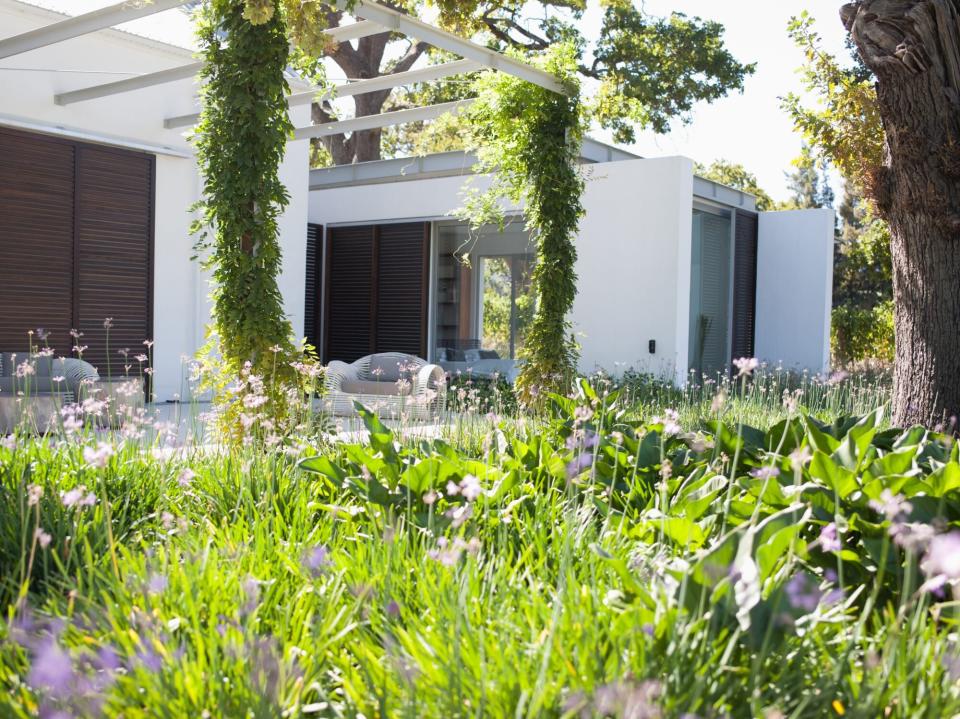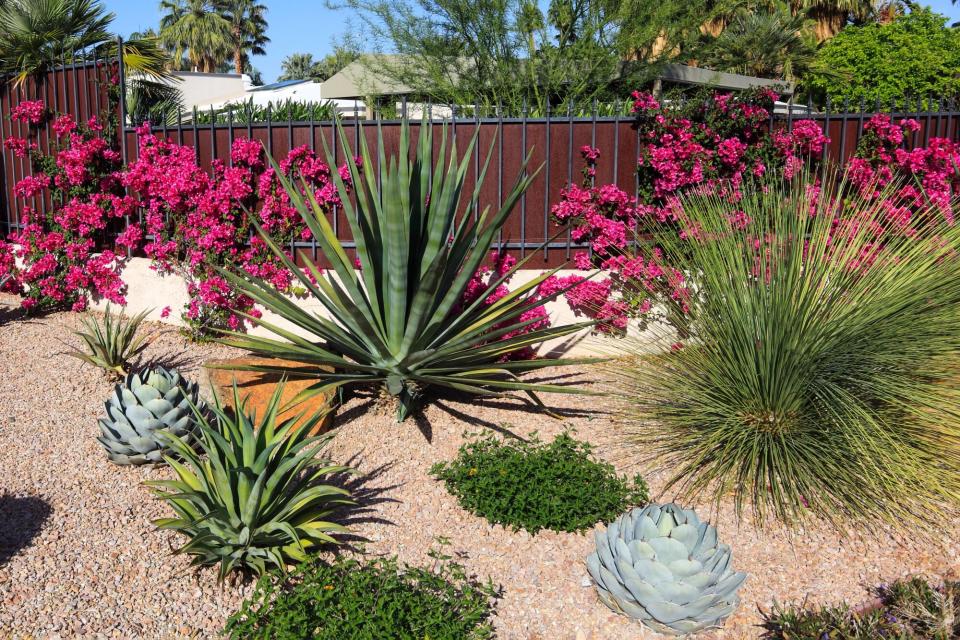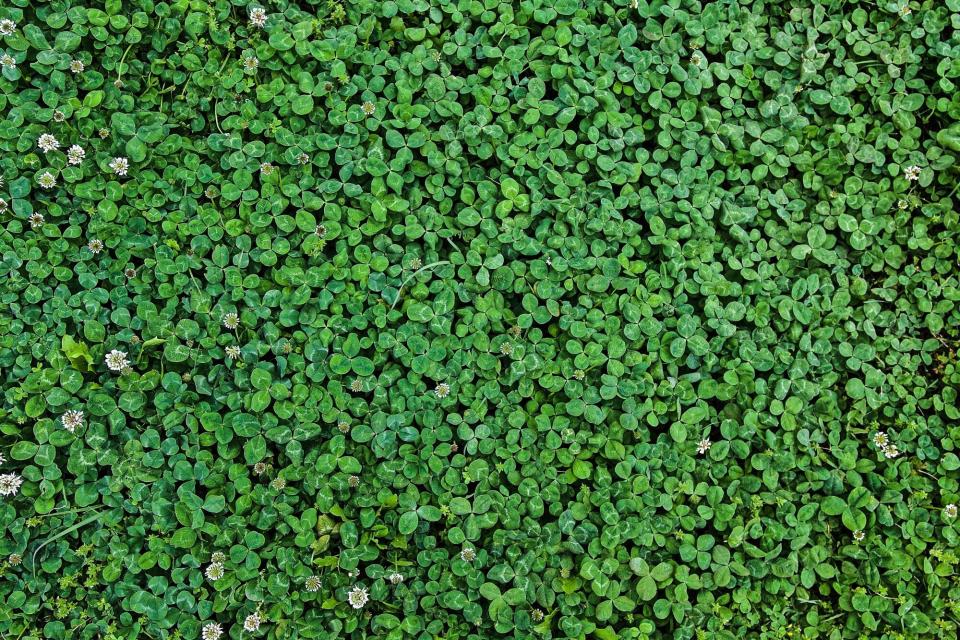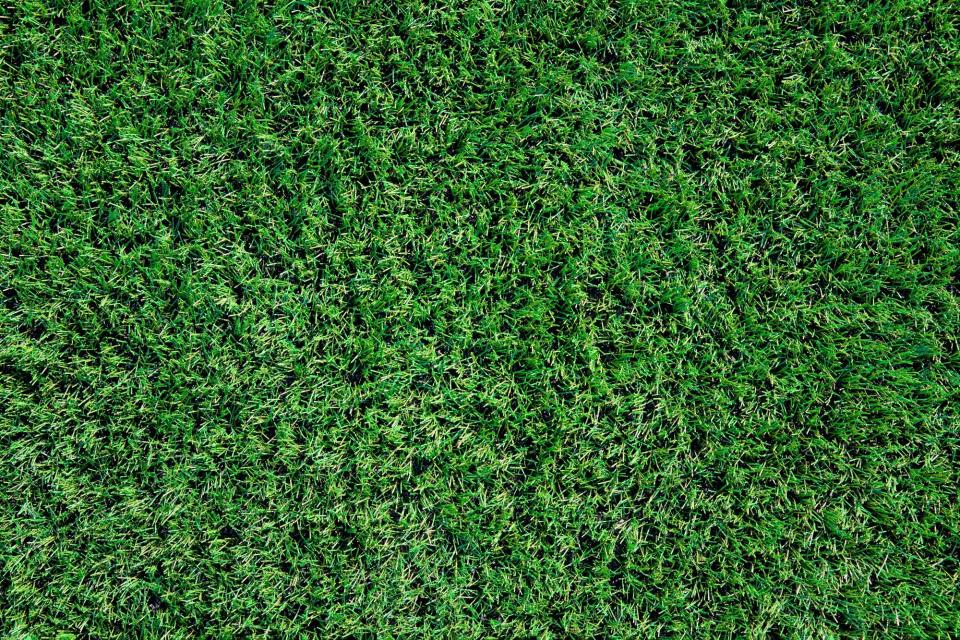9 Alternatives to a Traditional Grass Lawn—and Why You Should Consider Making the Switch
For many homeowners, a well-manicured lawn is the ultimate way to enhance your landscape's curb appeal, which makes it easy to overlook its many drawbacks. Although it looks eye catching, grass requires a great deal of maintenance, from chemical treatments to large volumes of water. But you can still have a lush yard without having to deal with mowing, weeding, or fertilizing. In fact, there are a handful of traditional grass lawn alternatives that require little to no maintenance to thrive.
Alternative options, such as ground cover, meadows, and gravel gardens, are beneficial to our ecosystem, lower maintenance, and beautiful to boot. Simply incorporating even one grass alternative will yield positive results, which include cooling the local environment, providing shelter to wildlife, and filtering out dust and pollutants from the air.
Related: 10 Xeriscaping Ideas That Will Make Your Garden More Hands-Off and Sustainable

Robert Daly / Getty Images
Benefits of an Alternative Lawn
There are a handful of reasons why homeowners convert their grass into an alternative lawn. "Some folks are changing their landscapes as their own personal response to large-scale environmental changes like drought and loss of important insect populations," says Ryan Gott, Ph.D, entomologist and fellow in the Longwood Gardens Fellows Program. "Others have specific goals in mind, such as reducing water run-off to lower flooding risks."
Welcomes More Wildlife
Grass is an example of a monoculture. "It's one type of plant and it's taking up a tremendous amount of space on a property," says Matthew Bromley, landscape architect of Bromley Landscape Design. "Monocultures are bad because we're not developing soil microbes and giving birds and other insects the right food to eat." By converting to an alternative lawn, you're increasing the biodiversity of your landscape and decreasing the need for synthetic fertilizers and pesticides, which will usher in more wildlife, like birds and butterflies.
Adds Seasonal Interest
If you live in an area that experiences all four seasons, you know how drab your yard can look during winter. Moving away from a traditional grass lawn can help with that. "Lawn alternatives can also offer more interest throughout the year," says Holly Kuljian, principal and landscape architect of Pine House Edible Gardens. "Ornamental grasses send up beautiful plumes in the fall, and plants change colors, while lawns look the same all year and are much less dynamic and inspiring."
Cuts Down on Maintenance
Perhaps one of the biggest allures of an alternative lawn is how low maintenance it is, which in turn makes it a more sustainable option for the environment. These types of landscapes don't typically require irrigation, which means you cut down your water usage significantly. Plus, you won't need to administer fertilizer or pesticides as frequently as you would for turf grass.
Types of Alternative Lawns
With a variety of alternative lawn types to consider, it's helpful to do some pre-planning before choosing which one you want to implement in your space. "The first thing to consider before converting traditional turf grass lawn is the scope of what you want to do," says Gott. Set achievable goals by asking yourself how much of your lawn you want to change and how long it will take to get there.
"Next, do a careful assessment of your space in terms of sun exposure, soil quality and type, rainfall, and the shape of the land," says Gott. "This will be critical information for deciding what plants you can use in each location of your yard." From there, you should have a clear idea of which alternative lawns work for you.

Clive Nichols / GETTY IMAGES
Gravel Garden
This low-maintenance alternative to a traditional lawn requires no soil amendments, mulching, or diligent weeding. "A gravel garden uses gravel to fill in the negative space between plants that might otherwise be mulch, bare soil, or lawn," says Kuljian. This lawn alternative typically makes use of native plants to add color and improve biodiversity, since native varieties are designed to thrive with little water. Rather than growing them in soil, the plants are placed in washed, small gravel that replaces all or a small section of traditional turf.

GETTY IMAGES
Xeriscape Landscape
Ideal for areas where droughts are common, xeriscaping is a garden system that requires little to no supplemental irrigation beyond annual rainfall; these landscapes depend on what the natural climate provides in order for the plants to survive. "While xeriscaping is an obvious choice in areas like the American Southwest that are desert ecosystems, it can also be practiced anywhere else," says Gott. "The focus is on working within your local conditions, like the rainfall you can naturally expect to receive, and choosing the plants that will thrive in those conditions."

Franklin Levert / GETTY IMAGES
Clover Lawn
As the name implies, clover lawns replace turf grass with clover. The lawn style promotes biodiversity, encourages pollinators, and stays green during warmer months when traditional grass can become sun-scorched. As long as the clover receives adequate sun—four to six hours per day—it requires little to no maintenance beyond the occasional mow. Clover can survive in a range of growing zones, but it does best in areas like California and Texas, where winters are mild and the summers are dry rather than humid.

Getty Images
Ground Cover
Add dimension and texture to your lawn by planting a few ground covers. "A ground cover is any low-growing plant you can walk on," says Bromley. Popular varieties include sedum, creeping thyme, Corsican mint, and chamomile, among others. "Ground covers are a good alternative because they require fewer inputs like water, fertilizer, pesticide, and labor to thrive than turf grass lawns do," says Gott. The lawn alternative can be herbaceous or woody, evergreen or deciduous, and annual or perennial, meaning it provides plenty of opportunity for added seasonal interest and curb appeal.

Jacky Parker Photography / GETTY IMAGES
Meadow Lawns
Meadow lawns, also referred to as tapestry lawns, are composed of a variety of low-maintenance native plants that are interspersed with wildflower seeds or wildflower plugs. "Native grasses provide an incredible ecosystem for bugs that birds eat," says Bromley. Meadows can be designed with mowed paths for walking or left un-mowed for a more naturalistic look. In addition to increasing diversity, meadow lawns are better for healing soils, reducing runoff, and cleaning the air. An added bonus? This type of lawn is more resistant to weeds, pests, and fungus.

Hemant Jain / Getty Images
Moss
Moss is a low-maintenance grass alternative that stays green all year long and requires no mowing, weeding, watering, or fertilization. It's ideal for landscapes that receive ample shade and moisture. Pair this fuzzy covering with gravel or pavers for a charming visual display or leave the bed on its own—either way, you'll never have to worry about taking out your mower. "There are many varieties of moss that are hearty enough to walk on," says Bromley, making it versatile for properties with heavy foot traffic.

GETTY IMAGES
Herb Garden
Herb gardens pull double duty as a low maintenance lawn alternative and a food source. "You can use herbs in the kitchen (they smell wonderful), and in most cases, pollinators like bees and butterflies love herb flowers,"says Kuljian. "Large swathes of lavender and low-growing rosemary make for a culinary and aromatic landscape that also creates a fantastic pollinator habitat." Many low maintenance Mediterranean herbs, like thyme and oregano, can handle dry conditions, meaning they're able to withstand minimal watering.

GETTY IMAGES
Food Forest
A food forest is the practice of creating natural habitats that include edible plants. It utilizes layers of plants, from fruit and nut trees all the way down to root vegetables, to produce an ecosystem of greenery designed to feed you and your family. "Including food in your garden is a very water wise practice," says Kuljian. "You're reallocating water that would be completely wasted on a lawn to plants that provide food."

GETTY IMAGES
Artificial Turf
In recent years, artificial turf has come a long way from the unattractive options historically on the market. "There are brands now making artificial turf that filter water, look real, and feel soft," says Bromley. This option is particularly common in the South and Southwestern regions of the United States, where grassy lawns require exorbitant amounts of water and chemicals to maintain. "While it may seem counterintuitive to put a plastic-based product down, you're getting the opportunity to reduce the amount of chemicals and labor used," Bromley says.

